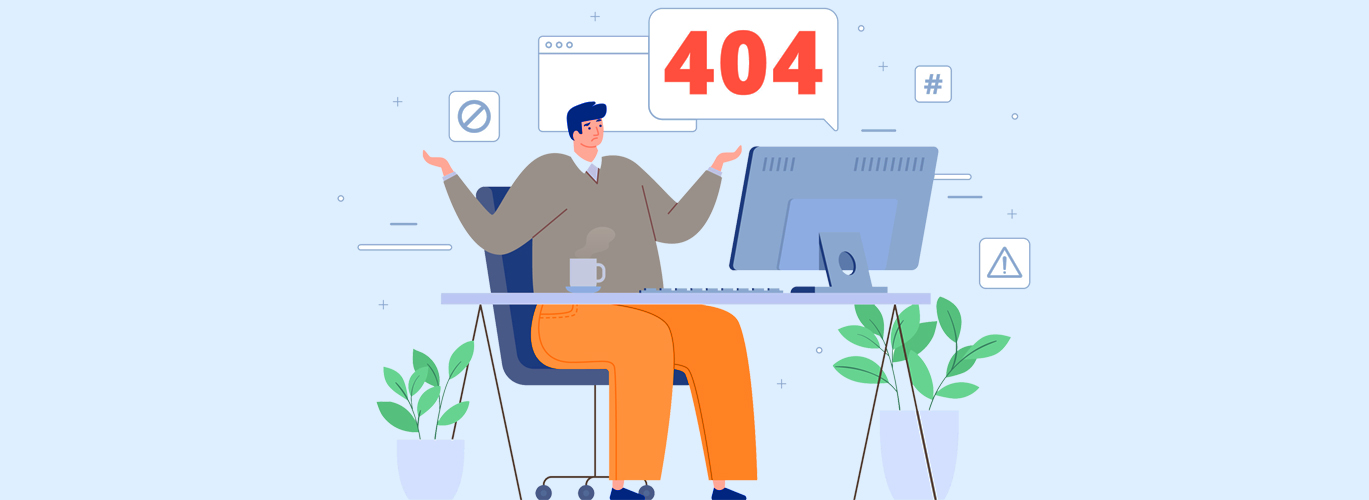We’ve all encountered this while searching or downloading a file, a 404 error. When you search for a website you might have noticed that sometimes the website doesn’t load, in fact it returns an error which may be like error 404. This webpage cannot be found on the server. Actually, what do the numbers in this error mean, and why the numbers 404 specifically? You will have answers for these in this article.
What is a 404 Error?
404 is an error code that can be seen on websites. This conveys that a link is broken or does not head to a valid page on a website. All site owners hate to see this thing on their website that can upset a user’s online experience. A user can roll onto a 404 page in different ways. Sometimes they follow a link on the website itself that takes you to a 404, or sometimes they have a bookmark that drives you to a dead-end. In some cases, 404 links can also be seen on other websites or through search engines.
Sites are reluctant from linking to many 404 pages as it is bad for the end-users experience. Some search engines precisely penalise websites that have a lot of broken links.
Its ubiquity on the internet has made it one of the most popular errors in the history of the web.
Why “404?”
Why is it 404? There are other “numbers” related to the status of loading a webpage. For instance, while loading a regular webpage, it’s a “200 OK” request, that means it loaded without any problems.
The father of the internet, Tim Berners-Lee, set up HTTP status codes during the 1992 World Wide Web Consortium (W3C). These codes are formatted in three-digit numbers which are still in use today. A code which begins with “4” conveys a client error. This means that the user requested a page that they cannot access.
Given below are some standard codes that also start with 4 that you might recognize:
- 400 Bad Requests: This often pops up when there’s a wrong request made to the site.
- 401 Unauthorised / 403 Forbidden: this is displayed when the user does not have the required permissions to access a page, like log-in or a digital authentication.
- 404 Not Found: This pops up when the resource, or the page, does not seem to exist on the server.
- 408 Request Timeout: This shows up when the server is timed out or hits its maximum time to load a page before the request finishes.
Identifying 404 errors on your own website
It’s essential for website operators to avoid HTTP 404 pages. There are a number of free tools available to help you recognize these broken links more easily. Three of the best and most used are:
Google Search Console
If you have a Google account and have registered your website there, you must make use of the Google Search Console option. Whatever 404 errors found by the Google crawler are shown in the web tool and can also be marked as corrected here too. More and more functions allow you to find errors in robots.txt files and use crawling statistics to work out how frequently your site has been crawled by Google crawlers.
Dead Link Checker
The Dead Link Checker is one among the simplest and fastest tools for finding both internally and externally linked 404 pages. All you have to do is simply enter the URL of the site you want to inspect and then start the check. There is an option here for checking a single web page or a whole site. The app marks all the tracked error pages with status codes and URL.
W3C Link Checker
This online tool from World Wide Web Consortium (W3C) is significantly detailed when it comes to testing individual website pages, so the method takes longer to verify links than with other websites. This works just like the Dead Link Checker: you enter the URL and the tool will do the rest. You can also add more details.
How to fix it
Now that you have identified your 404 errors let’s try to get rid of them.
Redirect the 404 error
Redirecting visitors to other relevant pages is the simplest way to fix 404 errors on your site. Just ensure you redirect them to something significant and not to send them back to your homepage.
Restore the page
Consider restoring the original page if you find there’s still a lot of need for a page you’ve deleted and there’s no suitable page to redirect users.
Correct the link
You can simply edit the link to point to the correct URL, if broken links exist on your site. However, you can’t fix links on websites you don’t control.
Develop a 404 page
By making a custom 404 error page, you can ensure no visit is wasted.
You will have to prioritise your efforts if you have plenty of 404 errors. Fix the 404 errors on any major pages. Pages like contact pages, product pages and service pages with 404 errors should be fixed first.
Other pages might not be so important. Google Search Console may reveal 404 errors on pages that a human user would never be able to navigate to. Eventually, you will have to fix them, but these errors must not impact your rankings too much.






